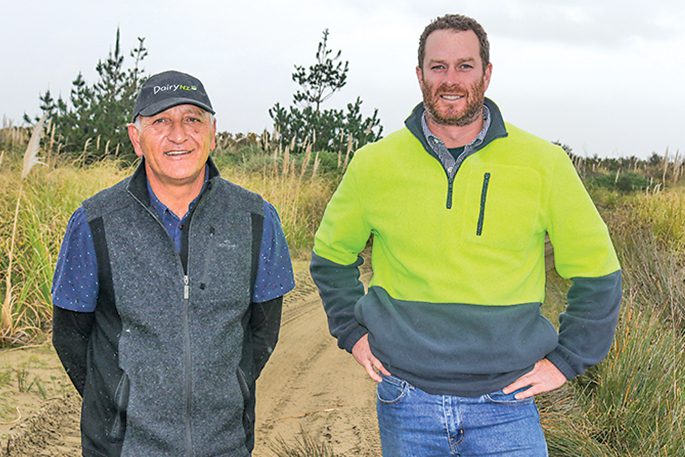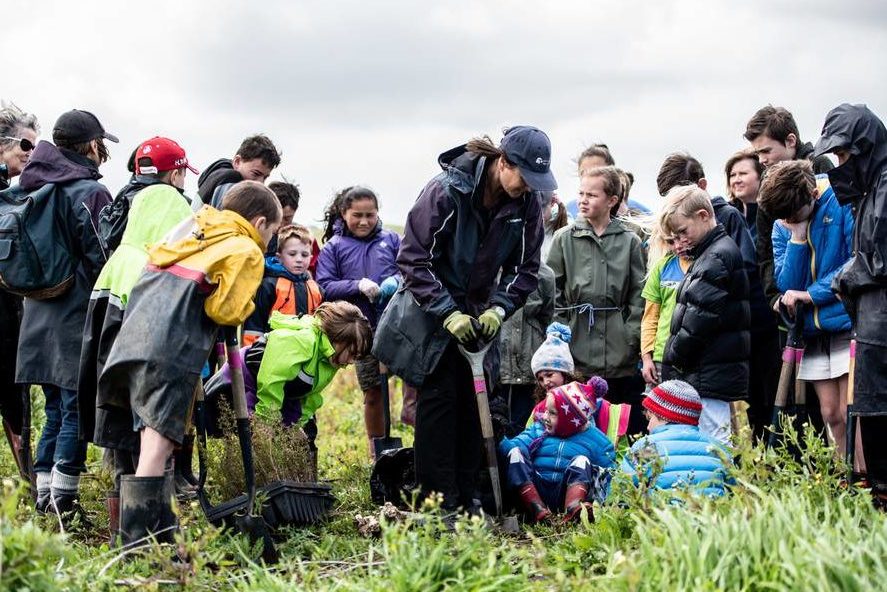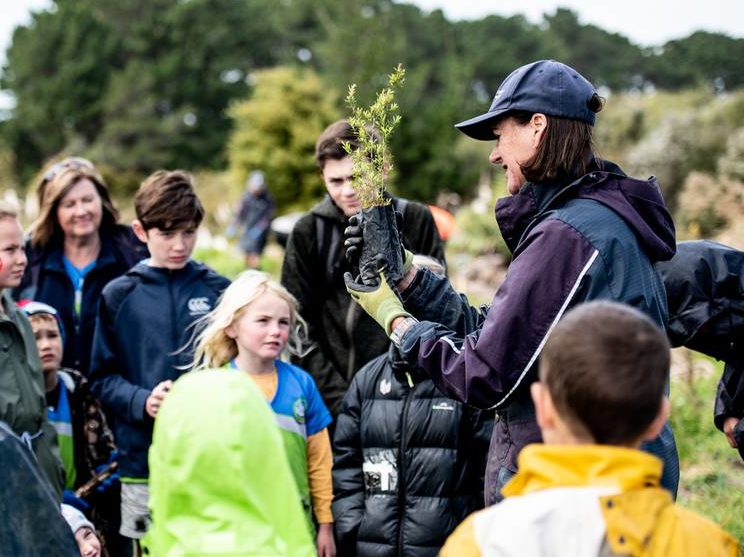Kia Puawai ai ngā taonga o Manukapua (fostering the birds of Manukapua) is the project and kaupapa of the Tapora Land & Coast Care Group. This dedicated group is restoring Manukapua, a special sand dune island that holds cultural, spiritual, historical and ecological significance.
Manukapua, also known as Big Sand Island, is located on the Tapora peninsula which stretches out into the entrance of the Kaipara moana.
We’re going to be chatting with Earle Wright today who is the chairman of the Tapora Land & Coast Care Group. Thank you so much for speaking with us today, Earle.
Firstly, what does the Tapora Land & Coast Care Group do?
Our focus is really on predator control throughout the 10,000-hectare Tapora peninsula, which includes rare and endangered ecosystems and the 840 hectare Ātiu Creek regional park that borders our peninsula.
We work with all the landowners on our peninsula including the Department of Conservation, Te Uri o Hau Settlement Trust and Auckland Council. All of our landowners contribute to the costs of insurance, legal fees tied to being a legal entity and the cost of keeping our group up to health and safety standards. In the past, we have had issues accessing pockets of land but this has been rectified.
Now, we have land access agreements with all of our landowners and we’re all working together with the same values and interests. This is key for us to be able to do our work.

Six months ago we were audited by Auckland Council and our possum numbers were down to 1%. We’re very pleased with that. The first year we did possum control we caught 50,000 odd possums. This result has taken years of small steps.
In what ways is Manukapua a culturally and ecologically significant place?

Manukapua or cloud of birds is significant to Te Uri-o-Hau Ngāti Whātua because it is the remains of Taporapora. It is the landing place of our ancestors, our waka. Our Kaipara moana is full of history and stories.
For many generations and even today, the waters surrounding Manukapua provide seafood such as flounder, pipi and scallops, and the shifting sandbars of the Kaipara moana protect the sources of our kai.
Many bird species still nest here at Manukapua today.
So the mauri or the life force of Manukapua represents the essence that binds the physical and the spiritual elements of all things together. Mauri is a critical element of the spiritual relationship for Te Uri-o-Hau, it is the connection between the physical and spiritual world.
How does Tapora Land & Coast Care Group align with tangata whenua?
I am tangata whenua. I am mana whenua. I am the last descendant of that waka that actually resides here. I am a landowner here too. I am ahi kā.
I am also a kaitiaki for Te Uri-o-Hau, and we also have one of their kaitiaki on our board.
We are mana whenua so that relationship is very tight. Because I’m related back to that waka, they call my role Ahi kā. Ahi kā was someone in the old days that would tend to the home fires in peacetime. When our waka would go out to visit local marae, local hapū, or even return from the islands, they would come around the peninsula to return home. To guide them, there always needed to be a fire burning to show where home was. So that’s my job, to connect our community, our people and guide them.
What special native species make their homes on Manukapua and why is it important to protect them?
Manukapua is home to many and diverse wading bird species such as the northern hemisphere godwit or kuaka, that arrive at Manukapua on their trip from Alaska. Other species such as royal spoonbill, tara-iti fairy tern, white heron kōtuku, black-crested tern, Australasian bittern, spur-winged plovers, south island pied oystercatcher, pied stilt, banded dotterel, and much more.
We have endemic plants such as a rare kānuka species and the sea-grass remuremu.
It is important to protect them because these species are taonga. They are whanau. They are important for our wellbeing and the work we do assists with their well-being. We are all connected. Like my mum says, whatungarongaro te tangata, toi tū te whenua, people disappear, but the land remains.
In 2020, a six-year plan was announced to clean up the Kaipara moana, Aotearoa New Zealand’s largest estuarine ecosystem. What role does Tapora Land & Coast Care Group play in this ambitious project?
I’m boasting here but I would say we are the template for community groups, community action around the Kaipara restoration.
We are a part of a big jigsaw puzzle but we aspire to be a leading community group showing how you bring a community together, work together to improve water quality, biodiversity and each other.
We have had to navigate insurance, legal entity admin and health and safety measures and we are out there doing it. I’m sure many groups would struggle with knowing where to begin.

What is the most rewarding part of being involved in this conservation project?
People. I have amazing people that surround me. Our group has voluntary kaitiaki. Very shortly, we are going to do an in-depth training course with them so that they are skilled in conflict negotiation, history and educating others. Education is a big benefit we see.
Our work also brings mana to the community. It brings pride. It’s great to see the low number of predators, but seeing the people benefit is special for me.
What is the toughest challenge the Tapora Land & Coast Care Group faces?
I suppose like any group it is compliance and funding. Our aspirations, as a community and mana whenua, are at the whim of funders.
We are all volunteers and we’ve worked out that we’ve put in roughly $160,000 in voluntary hours but we only get a fraction of that in funding.
We also spend a lot of time building relationships and one of the hardest things that I struggle with is trying to track people down. You build a relationship with someone, maybe in Council for example, and then they move on. The new person that has replaced them doesn’t know you or your project.
Tapora Land & Coast Care Group hosts working bees where volunteers can monitor bird populations, plant natives and check trap lines. Why do you think people should get involved in local conservation projects?

It empowers you. It builds pride in your community.
We all want a healthy environment. We all love to see our native wildlife sitting on our doorstep. These things are all important but at the end of the day without them, we wouldn’t be here.
In Māori mythology, we are all the children of Ranginui our sky father and Papatūānuku our earth mother.
Insects, birds and lizards are all our whanau. We need to support our whanau.
Finally, how can people support the Tapora Land & Coast Care Group?
You can get online and donate $20 to join our membership.
We are always looking for more volunteers. With more volunteers, we can do more. When we have community days, we go through our history. It’s not just about getting plants in the ground for us, it’s about building that connection with the area. We want people to leave tired but feeling like they’ve had a great day and have learnt something. And want to come back.
You can find out more about the Tapora Land & Coast Care Group on their website.

